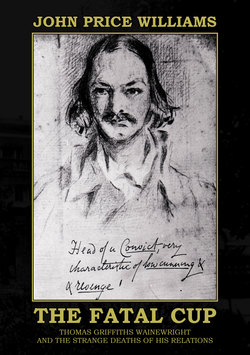Читать книгу The Fatal Cup: Thomas Griffiths Wainewright and the strange deaths of his relations - John Price Williams - Страница 44
На сайте Литреса книга снята с продажи.
Оглавлениеcriticisms of artistic exhibitions are easier. Turner, for instance, “has great dashing faults which would sink an ordinary artist”; He was almost reverential about his friend Sir Thomas Lawrence, the leading portraitist of his day and president of the Royal Academy, whose “breadth, richness and depth” he praised. The poet Swinburne called Wainewright the finest English art critic before John Ruskin, whose monumental five-volume Modern Painters defined the way Victorians thought of art.
But the other essays are mainly self-referential whimsy, showing off his knowledge and with more than a dash of parody, and it is likely that Scott recruited him to the London to leaven the otherwise serious content of the magazine. “Clever, but very fantastical essays as a relief from the more serious papers of his other friends”, said Cornwall.
As Wainewright said in his first essay, he had agreed with Scott that he should be allowed to be as profound or as flighty, as serious or as comical, as he pleased. Friends like Clare thought his contributions “very entertaining” and Lamb referred to him as “Kind light-hearted Wainwright (sic)...a genius of the Lond. Mag.”
By the time his last essay, The Weathercock Steadfast for Lack of Oil appeared in January 1823, the magazine was on the downward slope. Poor Scott had not lived to see much of its short-lived success. A bitter literary feud with a contributor to another magazine led to a duel by moonlight at 9pm on February 27, 1821. A bullet went through his intestines and he died nine days later at his lodgings in Covent Garden. Wainewright was to write melodramatically that he was with
THE FATAL CUP
44
